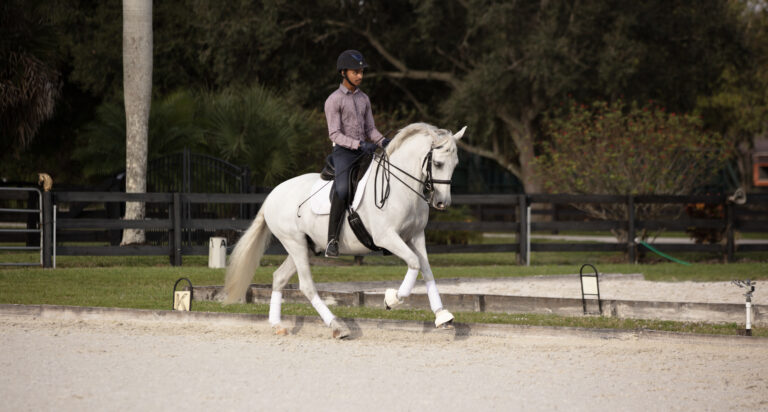January 4, 2012?With George still under the weather, 2011 Pan American Games team gold medalist Kent Farrington stepped in to work with the 12 riders in the 2012 George Morris Horsemastership Training Session on flatwork and gymnastics. It was a great follow-up to Beezie Madden’s “Basics with Beezie” demonstration yesterday in that Kent emphasized using lateral work on the flat as well as gymnastics to improve rideability over fences. In addition, his goal seemed to be to get the riders to start thinking about training their horses rather than just riding nice courses as they’ve been doing in the equitation classes that qualified them to ride in the clinic.
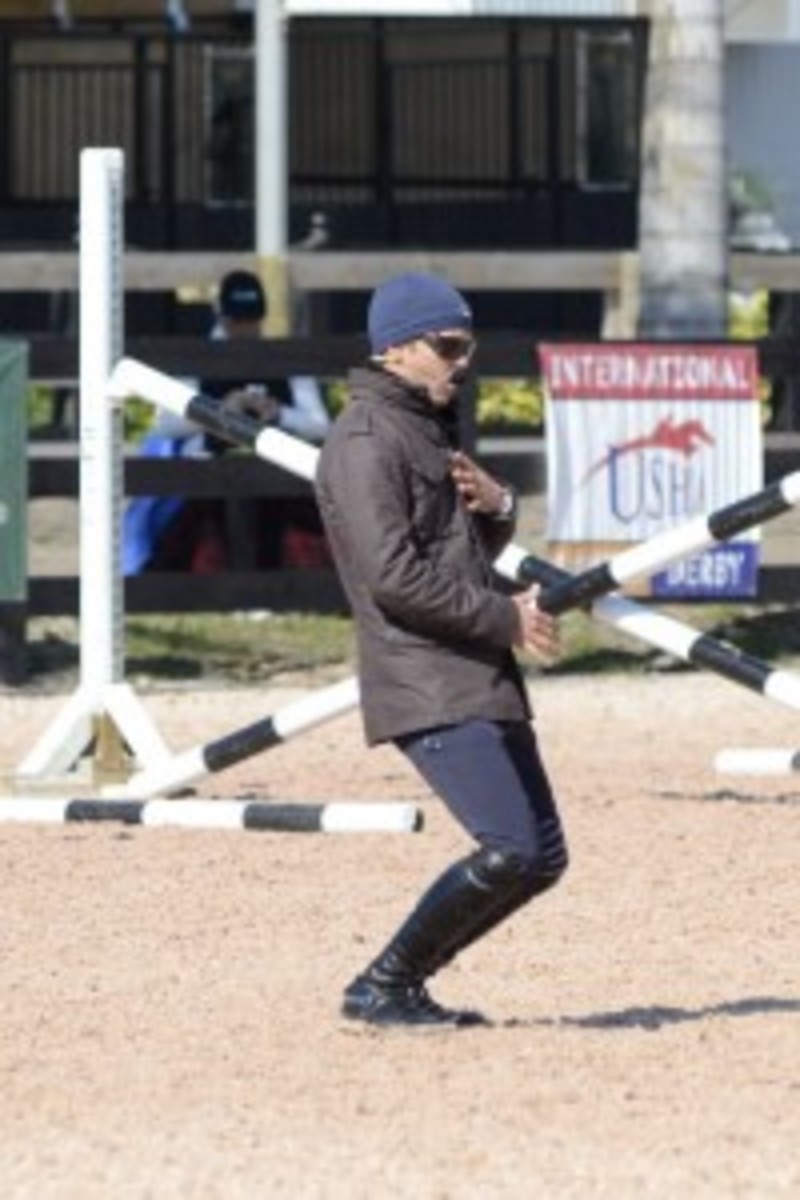
Kent began both sessions by having the riders work several feet from the rail to make sure their horses were straight and to not allow them to “hide on the rail.” He worked the riders through a trot warm-up, having them get the horses going forward at the rising trot, then bringing them back to a collected sitting trot. When they were sitting the trot, he told the riders, “Don’t be afraid to sit on the horse’s back. He needs to accept your seat the way he accepts your leg.” This was another parallel to Beezie’s demo yesterday where she worked on getting her horse to accept her leg by adding it rather than removing it when her horse fought it. He had them do the same at the canter, reminding the riders while they lengthened stride: “Lightening the seat does not mean dropping your body forward. Stay centered in the saddle. Don’t drop your shoulders.” Kent said he likes to work horses in a more open stride at the canter–something Beezie also mentioned yesterday.
“Discipline” was the word du jour. Kent used the word often in a couple contexts: the riders being disciplined enough to wait for distances to the jumps and also being disciplined enough to be consistent in training and in improving themselves. As the riders began working over gymnastics, Kent was very particular about how the riders approached each exercise. He reminded several riders who got in too long, “Don’t commit to the first distance you see. Wait for it. Be disciplined and wait for the distance.” One quote I liked was, “Go wide and add a stride,” meaning to take their time and wait for the distance. The jumps were set fairly short, which made the way the riders got to each fence very important. Several horses had a difficult time with this?making a bid for the jumps at the last minute and getting in long. For other riders, this encouraged them to not make big moves to the jumps.
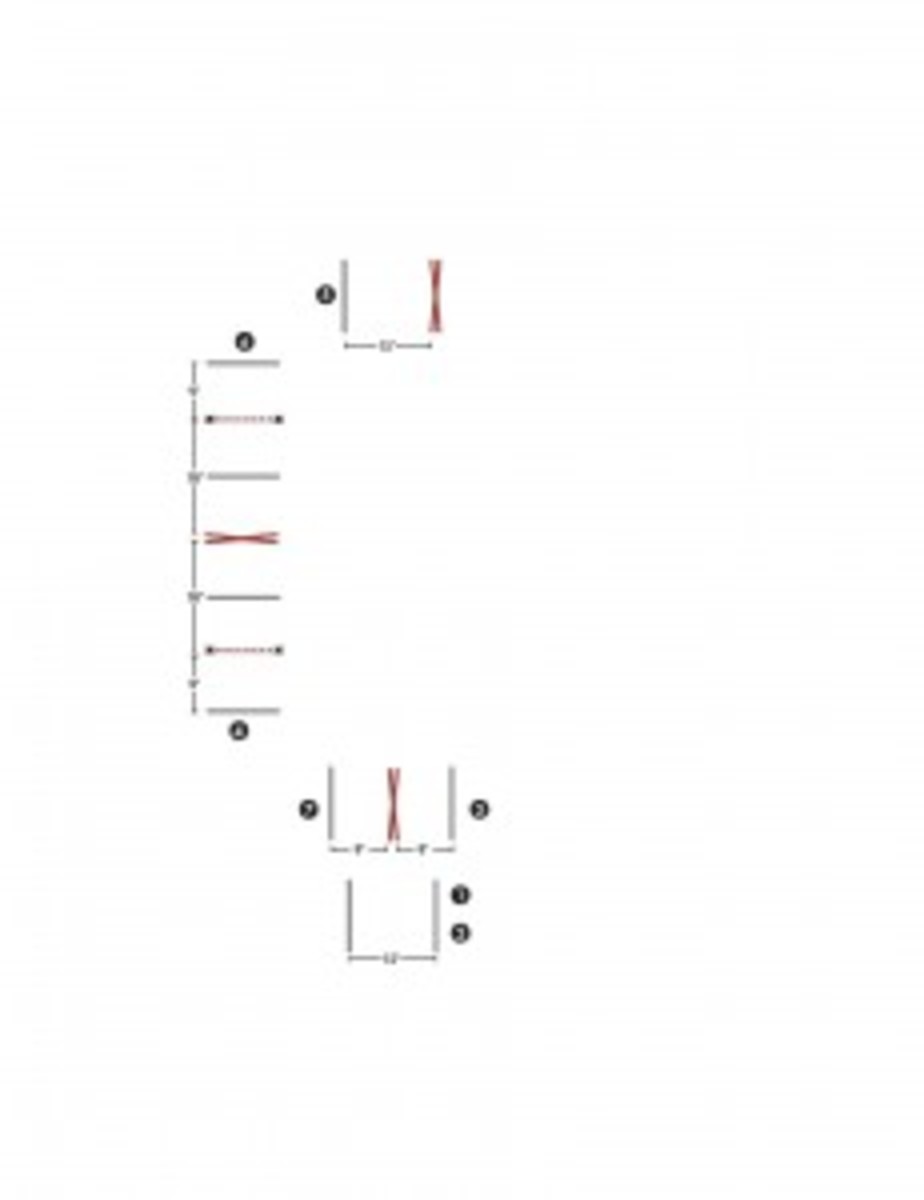
Kent required patience from the riders, but he was just as patient with them. As each rider went, he encouraged them to take an individualized approach to the pattern. If a horse didn’t get to a guide rail just right, he encouraged the riders to take the opportunity to come again and train the horse. For the horses who got strong, he told the riders it was OK to make a transition and/or circle before the next obstacle. By the end, each rider was getting the hang of it and figuring out what his or her horse needed at any point. Kent took whatever time was needed to get horses and riders working as teams. When someone was having trouble with one part of the gymnastic exercise, he had them go back to something easier, such as cantering over two poles on the ground, before tackling the more difficult exercise again. Once again this dovetailed nicely to what Beezie discussed yesterday?the importance of setting horses up for success.Dr Tim Ober: Veterinary Session
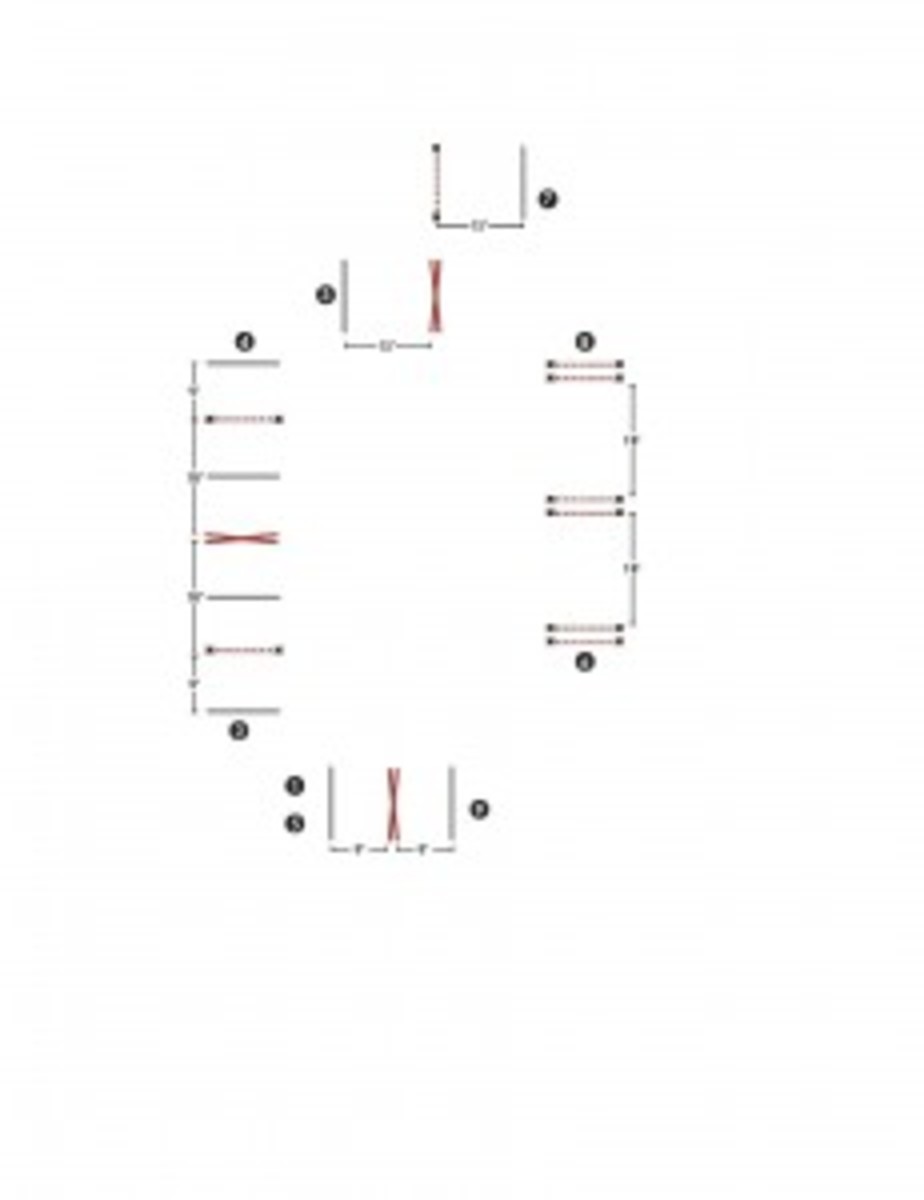
After the riders put away their horses, they met back in the arena for Dr. Tim Ober’s veterinary session. Dr. Ober is the US Show Jumping Team veterinarian and has been a fixture at the horsemastership clinic since its beginning. He began by addressing questions that have come up over and over each year:
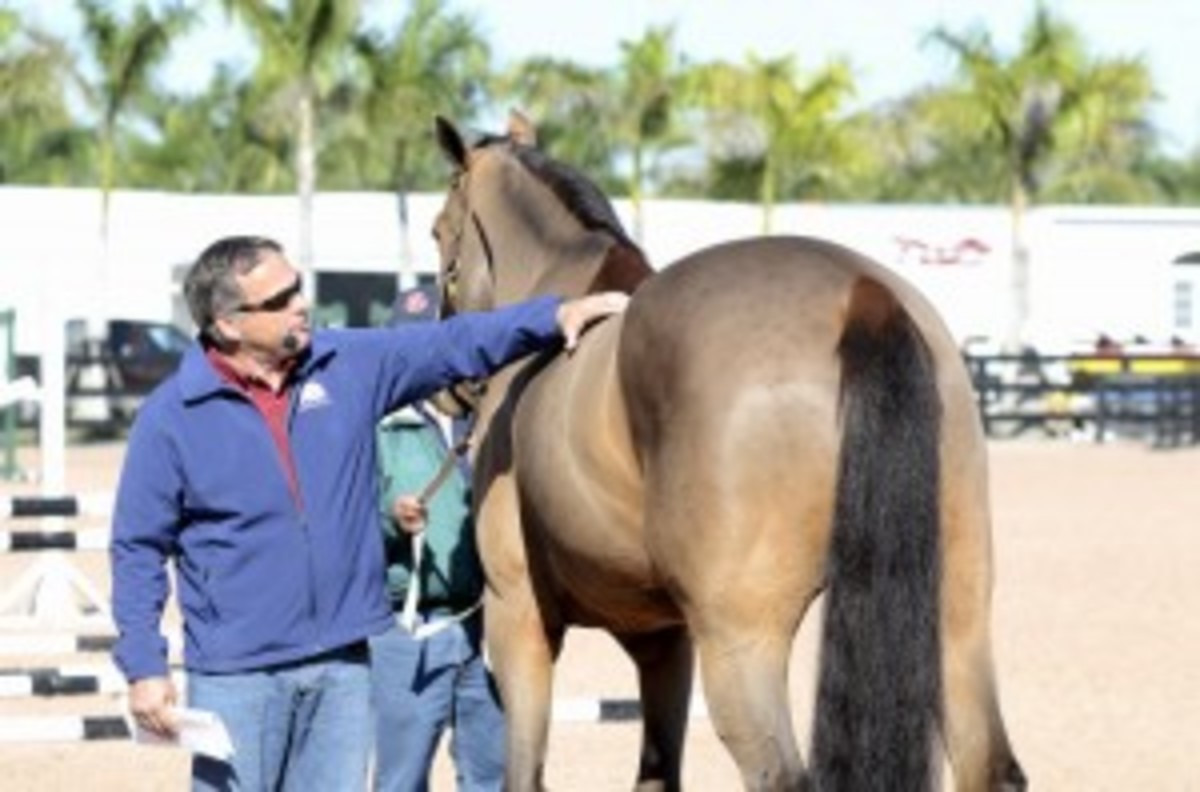
“What vet do I use? What do I look for in a vet?” Find someone whose goals are parallel with yours. Get to know the person over time. You need to have attitudes, approaches and ways of working in common. The vet also needs to have the tools that will allow you to reach the goals you have.
“How can I help the vet work more effectively?” Have the horses in and clean, and be ready to discuss specifics. Dr. Ober’s favorite clients are the ones who are hands-on. He recommends for owners/riders to have goals in mind for what they want to get out of the exam. What’s the complaint? Specificity is important and takes practice.
He then went over the basic minimums for an emergency kit:
- Dormosedan
- Banamine
- Dexamethasone
- sterile gauze
- cotton
- Vetrap
- Elastikon
- duct tape
He advised learning how to properly use each item, and cautioned that you should talk to the vet first before using any of these items.
For these future professionals, Dr. Ober talked about knowing whether something is a physical problem or a training issue. He said that there’s a tendency for trainers and riders to rely on the vet to fix problems that could be solved through training. It’s a balance between calling the vet too quickly and not quickly enough, he said. The first step is developing a system of observation.
The most important areas of the horse, Dr. Ober said, is the foot, topline and limbs. For the foot, conformation and balance are key. Keeping the topline free and mobile makes for a more balanced horse. Keeping a horse balanced allows for long-term health and soundness. “The better job I can do keeping horses’ toplines mobile and pain-free, the better chance of keeping him balanced in his body.” He said that chiropractic is an important part of this.
When speaking about the limbs, he said there are three important considerations: conformation, soft tissues and joints. As for conformation, there’s “normal,” and there are are variations. Some horses can deal with variations or even extremes from normal better than others. In general, though, the more correct the horse, the better.
Following this short discussion, barn manager Pancho Lopez longed two horses for evaluation. He started each out on a larger circle so the riders could make first impressions of movement before they were brought in on smaller circles in both directions. The first horse showed some neck stiffness and the right hindquarter dropping more than the left, slightly dragging his toe and not tracking up as well as it could. The horse got better and better as the session went on, so Dr. Ober said that he wouldn’t be overly concerned about it. The second horse showed a very slight drop on one side behind in only one direction but was generally quite even and comfortable.Katie Prudent: Buying Horses
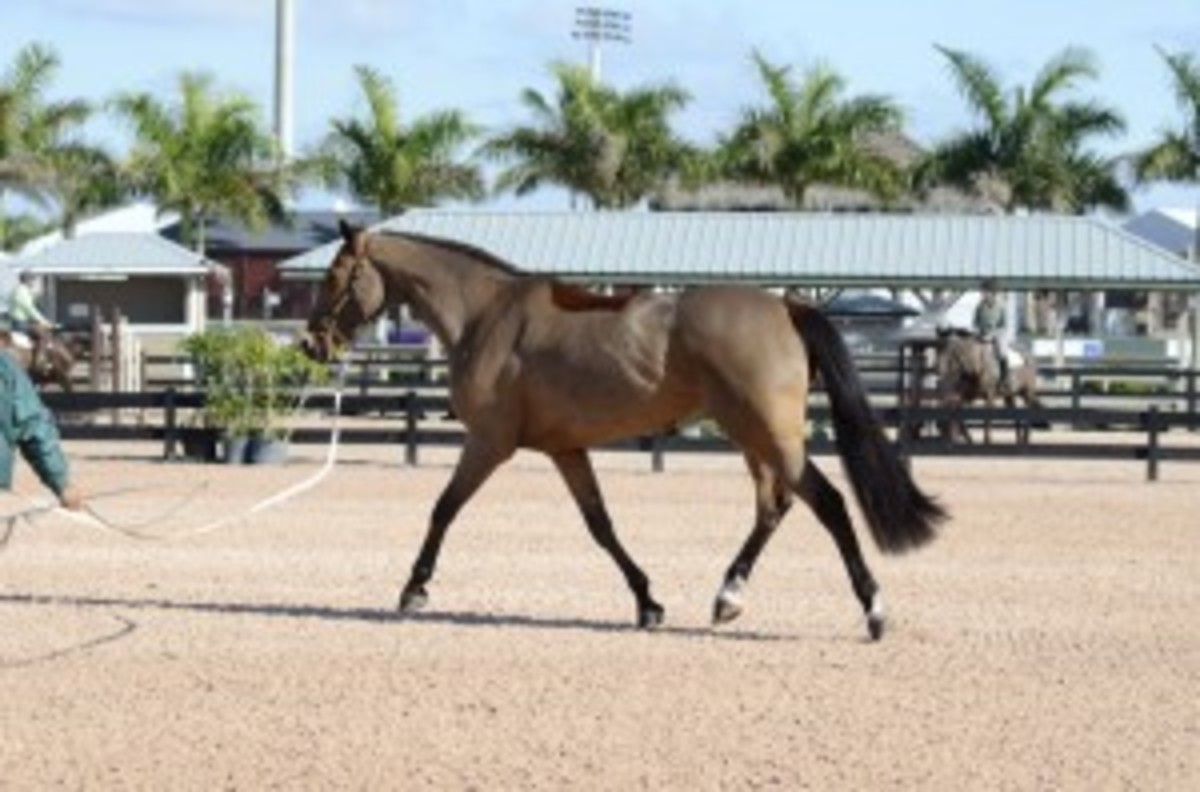
Hunter/jumper legend Katie Prudent then held an unmounted session on what to look for when buying horses, which attracted quite a few spectators. She said there are six qualities she looks for in potential horses:
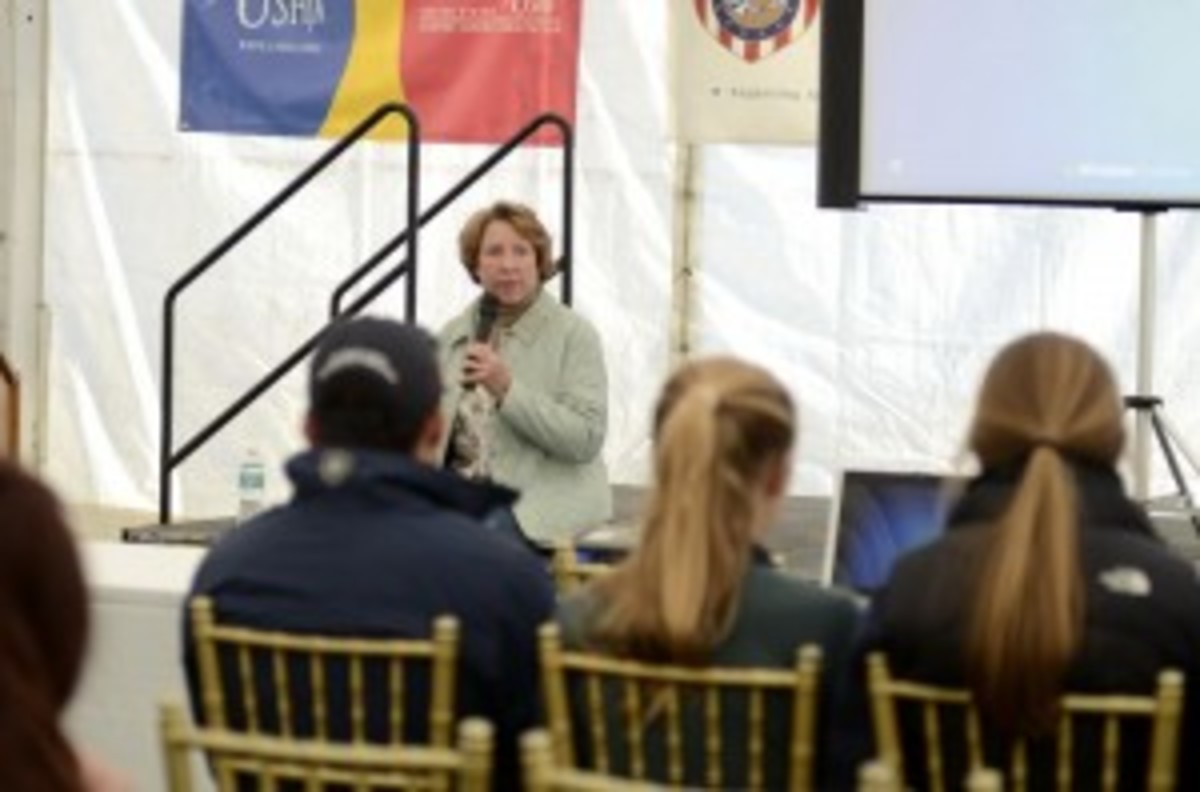
- How careful the horse is over jumps. There are several types of careful (scary careful, careful and careful enough). Which horse is right depends on the client. She wouldn’t recommend a “scary careful” horse for anyone but the top professionals, for example.
- Bravery
- Scope–the ability to jump high and wide fences
- Good brain–the ability to accept training. Horses with a good brain generally have heart.
- Rideability. What kind of mouth does the horse have? Is his stride adjustable? Is he balanced? Is he handy? Again, this depends on the client. Rideability is trained.
- Soundness. This is the trickiest part. Evaluate by looking at conformation, ride to feel if there are any weaknesses (which can be more apparent under saddle than watching from ground) and have a vet you trust tell you what he thinks you can manage.
Tips:
Videos are useful but not always a good representation of the horse’s strengths and weaknesses.
- Check the horse’s records. See if there are any gaps between shows, possibly indicating an injury. Also see if there are lots of faults.
- Analyze the strengths and weaknesses of the rider. Will the horse put up with the weaknesses and blossom with the strengths of the rider?
- Look to see what kind of rider has been training/riding the horse. A horse ridden by a big, strong guy may not be the right one if the client is a small young woman.
- Test the horse when trying him. Riders are often nervous when they look at horses and want to be perfect. This isn’t always the best way to go. Katie wants to see what the horse does when a rider makes a mistake.
- Jumpers don’t need to be quiet. She likes to see the horse have a little pep.
- Test the horse’s bravery–grab a blanket or coat and make things unusual to see how the horse handles it. If the horse is very expensive, you need to know for sure the horse does certain things like water, etc.
- Spookiness isn’t a bad quality, but it requires a good rider. Spooky horses tend to be more careful.
- Evaluate scope by looking at the horse’s record and by riding wide and tall double oxers.
- Rideability is the easiest to determine and often the least important because it’s trainable.
Katie says that conformation is not very important to her. Unless there’s a really blatant fault, conformation doesn’t really tell her a lot. She’s also not big into looking at breeding. “If I like a horse, I then look at the breeding.” She finds that she tends to gravitate toward certain bloodlines even though she doesn’t pay that close attention to it.
Tomorrow, McLain Ward takes the riders through his own flatwork and gymnastics session. He is no stranger to the Horsemastership session, having filled in for George for a session a few years ago.
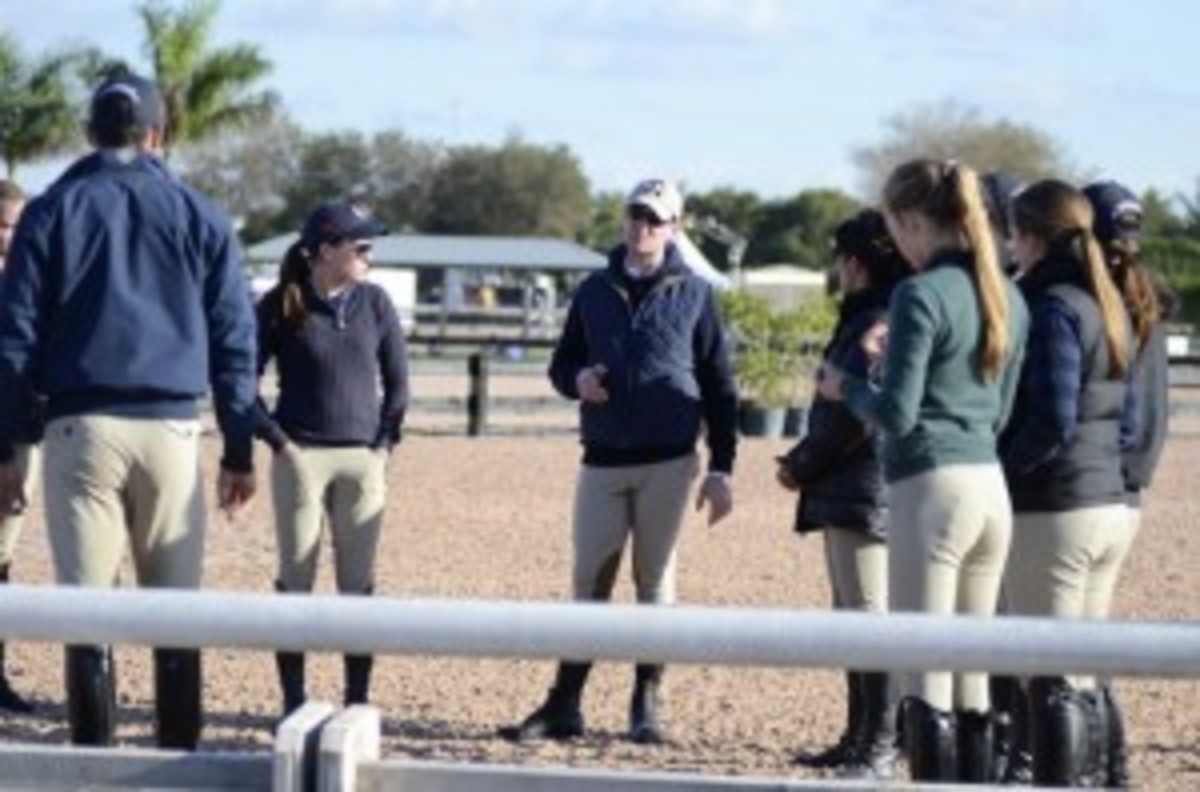
For more coverage of the 2012 George H. Morris Training Session, see our reports from Day 1 and Day 3.
The 2012 George H. Morris Horsemastership Training Session, presented by the US Hunter Jumper Association and Adequan, is being held at the Palm Beach International Equestrian Center in Wellington, Florida, Jan. 3-7. Twelve young riders are participating in the sixth annual training session sponsored by Practical Horseman, The Dutta Corporation, Farnam and Equestrian Sport Productions. The training session includes mounted lessons as well as educational sessions on stable management, veterinary care and nutrition.
Auditing the mounted and educational sessions is free and open to the public. There is live streaming of the mounted sessions at www.USEFNetwork.com, where there are also updated broadcast and auditor’s schedules.
For Practical Horseman’s coverage of previous years’ training sessions, click here.






